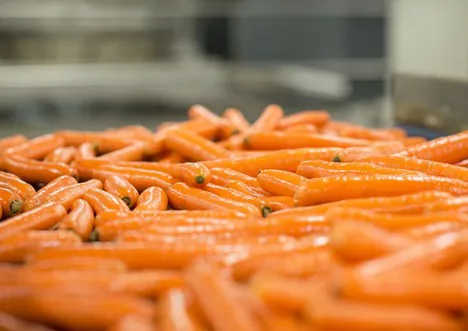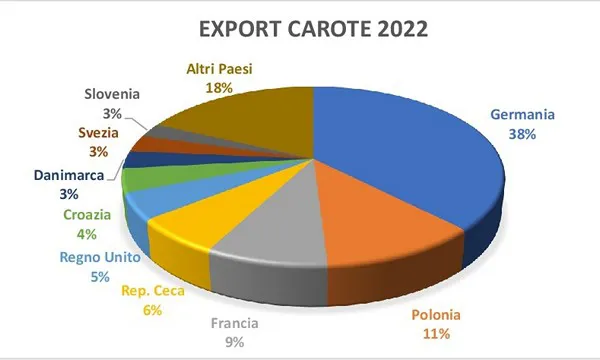This year too, at Zanarini we have thought about sharing with you a few bits of information as regards the new Italian carrot season.
The Chioggia carrot season is about to start, and we are used to talking with those who know this product because they grow it, in addition to studying data and the statistics that provide us with an overview of the trend over the past few years.

There are no data available yet regarding this year's cultivated areas, however it seems like there are no particular variations compared with 2022, characterized by a 30% drop with respect to 2021 going from 10,415 hectares to 8,072 hectares (source: ISTAT).
This year's data is a a positive one, in slightly opposite trend to Europe where, for example, France is experiencing a 30% lack of produce with a demand that seems stable or even higher than in the past season. Spain also seems to be facing a drop in production and delayed harvesting. Northern Europe, and Sweden in particular, is dealing with drought problems.
But why are cultivated areas not increasing in Italy and why are they shrinking in Europe?
Climate change and the EU prohibition to use pesticides that are allowed in other parts of the world are leading to the most challenging and less profitable crops being abandoned in favor of others (such as corn and fodder), leading to a loss of 'food sovereignty' also in some segments that have always been the symbol of Italian and European agriculture (Il Sole 24 ore, February 2023).
We can now hypothesize that the Chioggia carrot campaign will start around May 10th and peak during the first week of June. The winter produce is coming to an end in northern Italy and in the Fucino area, while the commercialization of Sicilian carrots is starting, albeit with less produce than expected, with prices around €0.60/kg in big bags.
There are no particular production problems in the Veneto other than the fact that nylon films will be removed over the next few days and there will be the problem of water, as no rain is expected and seawater is penetrating further up the rivers, making them unusable for irrigation.
But how is consumption in Italy?
2022 purchases remained stable compared to 2021 (-0.7%) however, if we compare 2022 with 2019, carrot purchases have increased by 8.8%. Carrots currently represent 3.6% of the vegetables purchased, in line with the previous year (-0.6%) and with a 6.1% increase compared with 2019 (source: ISMEA based on Nielsen data).
What about exports?
In 2022, Italy exported 78,049 tons, i.e. 20.5% less than 2021. The preferential channel is Germany, followed at a distance by Poland (source: ISMEA).

The drop in exports in 2022 was partly due to the considerable stocks available at European level at the start of the campaign, which should not occur this year as there should be no stocks of old produce when the Chioggia campaign will start.
We are hoping that this campaign will be interesting and profitable. At Zanarini, we are available for all kinds of needs, with the hope of strengthening existing commercial relations and to establish new fruitful and lasting collaborations.
For further information:
Francesca Barbieri
Responsabile di prodotto
[email protected]










